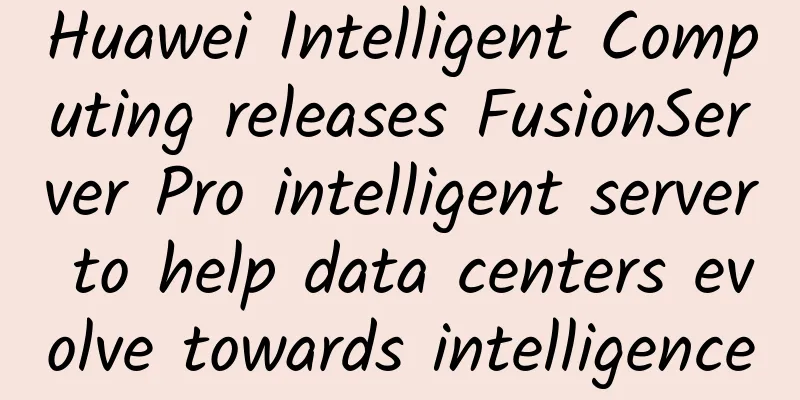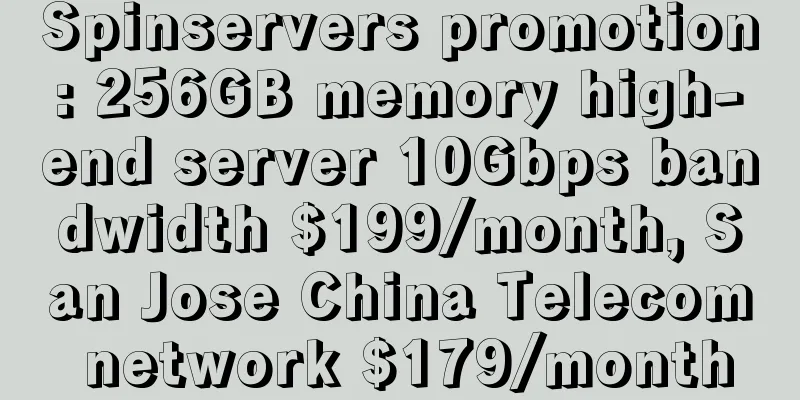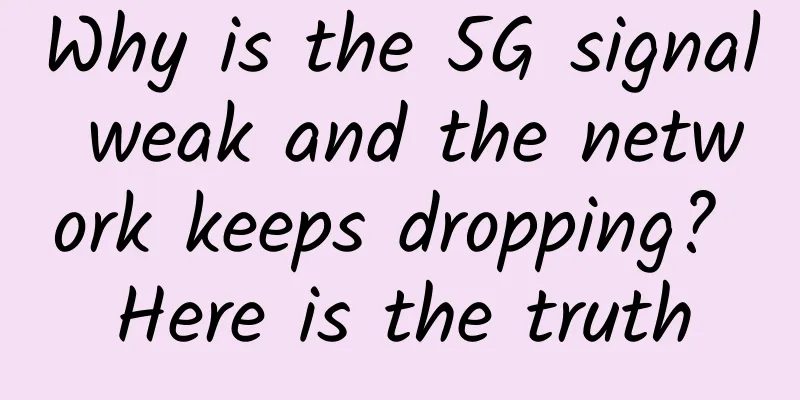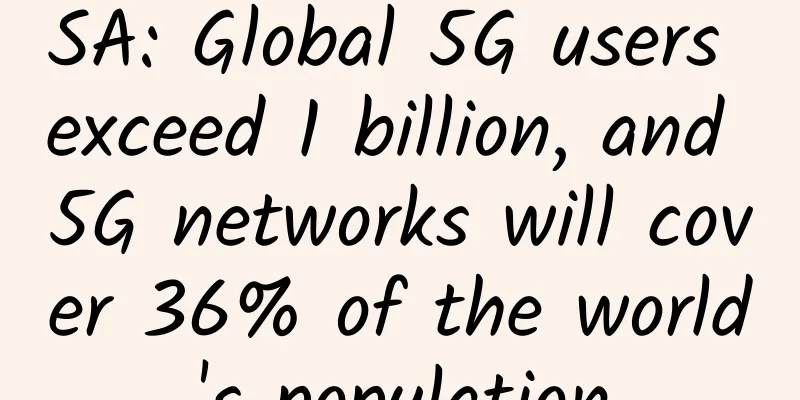What are the differences between 1G, 2G, 3G, 4G, 5G and 6G networks of China Mobile, China Unicom and China Telecom?
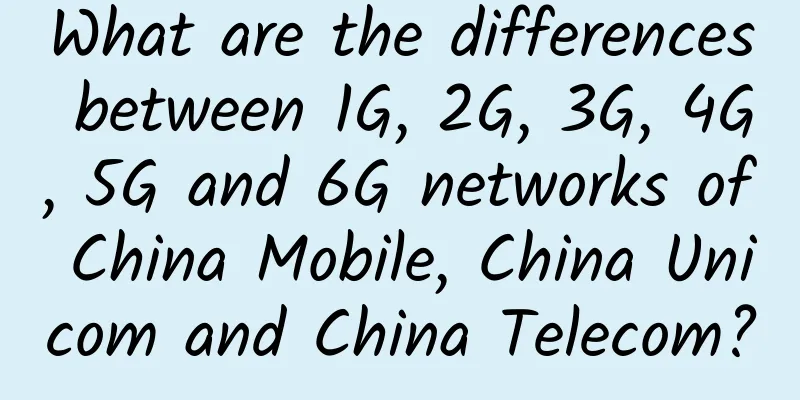
|
With the development of the times, people are pursuing better and better network experience, and a good network experience must be supported by a good network speed. So we have developed from 2G to 3G to 4G, and then to the well-known but not yet used 5G. Even the Ministry of Industry and Information Technology said that it is already researching 6G. From 3G to 4G, many people are worried or even reject it, thinking that the faster network speed will bring high consumption, but after a period of testing, it is clear that everyone has completely adapted to 4G. So, what is the difference between 1G, 2G, 3G, 4G, 5G networks, and even 6G networks? This is a question that many people are puzzled about. *** generation, 1G analog cellular network The first generation of mobile communication technology used multiple cellular base stations, allowing users to move freely during calls and seamlessly transfer calls between adjacent base stations. Second generation, 2G digital network The second generation of mobile communication technology is different from the previous generation. It uses digital transmission instead of analog and improves the efficiency of telephones in finding networks. During this period, the number of mobile phone users increased rapidly and prepaid calls became popular. During this period, the text messaging function was first applied to the GSM platform and later expanded to all mobile phone formats. Paid content such as ringtones became a new profit growth point. The world's largest mobile communication standard format. Due to internal compatibility, international roaming becomes easier. 80% of the world's 2G networks are GSM, covering 3 billion people in 212 countries and regions. The third generation, 3G high-speed IP data network The most significant feature of the third generation of mobile communication technology is the use of packet switching to replace circuit switching in data transmission. A few years ago, USB dongles for accessing mobile Internet on computers came out. Circuit switching enables voice and other data transmission between mobile phones; packet switching converts voice and other data into digital format and transmits data packets including voice, video and other multimedia content through the Internet. Fourth generation, 4G all-IP data network In the 4G era, circuit switching will disappear completely. All voice calls will be digitally converted and conducted in the form of VoIP. Therefore, calls on the 4G network can rely on wired or wireless networks without necessarily requiring mobile signal coverage. 4G is a TD-LTE network. The Ministry of Industry and Information Technology has just officially issued 4G licenses. 4G is currently the fastest of all networks, with a theoretical peak downlink speed of 100Mbps. Fifth generation, 5G wireless network As the fifth generation of mobile communication network, 5G network has a peak theoretical transmission speed of tens of Gb per second, which is hundreds of times faster than 4G network. An entire ultra-high-definition movie can be downloaded in less than one second. The main goal of 5G network is to keep end users connected to the Internet at all times. In the future, 5G network will support more than just smartphones. It will also support smart watches, fitness wristbands, smart home devices such as bird's nest indoor thermostats, etc. 5G network will be a real upgrade of 4G network, and its basic requirements are different from today's wireless network. Extension of the sixth generation, 6G wireless network 6G network is an extension of 5G network, with a theoretical download speed of 1TB per second. It is expected to start research and development in 2020 and be officially put into commercial use in 2030. 6G integrates satellite network on the basis of 5G to achieve global coverage. 6G is a cheap and ultra-fast Internet technology that can provide incredibly high data rates or extremely fast Internet rates of up to 11Gbps for wireless or mobile terminals. The satellite communication networks that make up the 6G system can be telecommunications satellite networks, earth remote sensing imaging satellite networks, and navigation satellite networks. The 6G system integrates these satellite networks in order to provide 6G users with network positioning identification, multimedia and Internet access, weather information and other services.
So, what are the differences between 1G, 2G, 3G, 4G, 5G and 6G networks of China Mobile, China Unicom and China Telecom? 1. First, the Internet speed is different The GPRS Internet speed of 2G network is generally around 30K; the Internet speed of 3G network is generally around 700K; the theoretical peak downlink rate of 4G network can reach 100Mbps (100 megabits per second). The peak theoretical transmission speed of 5G network can reach several 10Gb per second; the speed of 6G network is as high as 11Gbps; in terms of Internet speed, 6G>5G>4G>3G>2G. 2. Secondly, different coverage The coverage rate of 2G is much higher than that of 3G, especially in mountainous areas, while 4G coverage is still being gradually improved, and 5G and 6G have not yet been officially commercialized. 3. Then, the rates are different 4G packages are the most expensive, and 2G packages are the cheapest. 4. Different temperature, power and utilization 3G network has lower power and radiation than 2G network, and 4G has even lower radiation after testing. 4G has higher network utilization efficiency than 3G, which will also save power per unit. Of course, although 5G and 6G are not yet commercially available, they are definitely good. Let us wait and see! |
>>: Understanding the differences between 5G and Gigabit LTE
Recommend
Wind River Alex Wilson: Integrated modularity is the development direction of avionics systems
[51CTO.com original article] At the just conclude...
The number of users is not increasing, the time spent is declining, and 5G applications are delayed. Can we only wait for the flowers to bloom in 2021?
[[397144]] After many twists and turns, the numbe...
BudgetVM: 1Gbps unlimited traffic server starting from $84/month, 10-100Gbps bandwidth options, US/Japan data centers
BudgetVM is a foreign hosting company that has be...
5G landscape changes dramatically: Apple and Qualcomm reach a settlement, Intel withdraws its votes and leaves, Huawei remains unscathed
Overnight, 5G changed the world. First, Qualcomm ...
The integrated development of 5G applications is imperative
In the two years since 5G was put into commercial...
TCP Things 1: TCP Protocol, Algorithm and Principle
TCP is a very complex protocol because it has to ...
Metaverse: What are the four pillars?
As a new paradigm of industrial Internet, the Met...
Actual combat case: 90% of network engineers have encountered it! In the scenario of unequal paths, packets will be lost through the firewall. How to solve it?
Background Recently, a certain enterprise has rec...
CheapWindowsVPS: $4.5/month KVM-4GB/60GB/1Gbps unlimited traffic/7 data centers available
The last time I shared information about CheapWin...
In the cardless era, can eSIM gain a foothold in the IoT circle?
The basic functions of mobile phones remain uncha...
Huawei has entered Jiangmen to help build a smart city and big data industry chain
Recently, Jiangmen Municipal People's Governm...
Five ways 5G will change retail
5G is a hot topic - along with Web3.0 and the Met...
To accelerate the layout of ICT, Fenghuo released the new server FitServer V5, which will show you what "more than powerful" means!
[51CTO.com original article] On July 21, 2017, Fe...
IPv6 just increases the number of addresses? In fact, the truth is not that simple!
On October 20, at the 6th World Internet Conferen...
